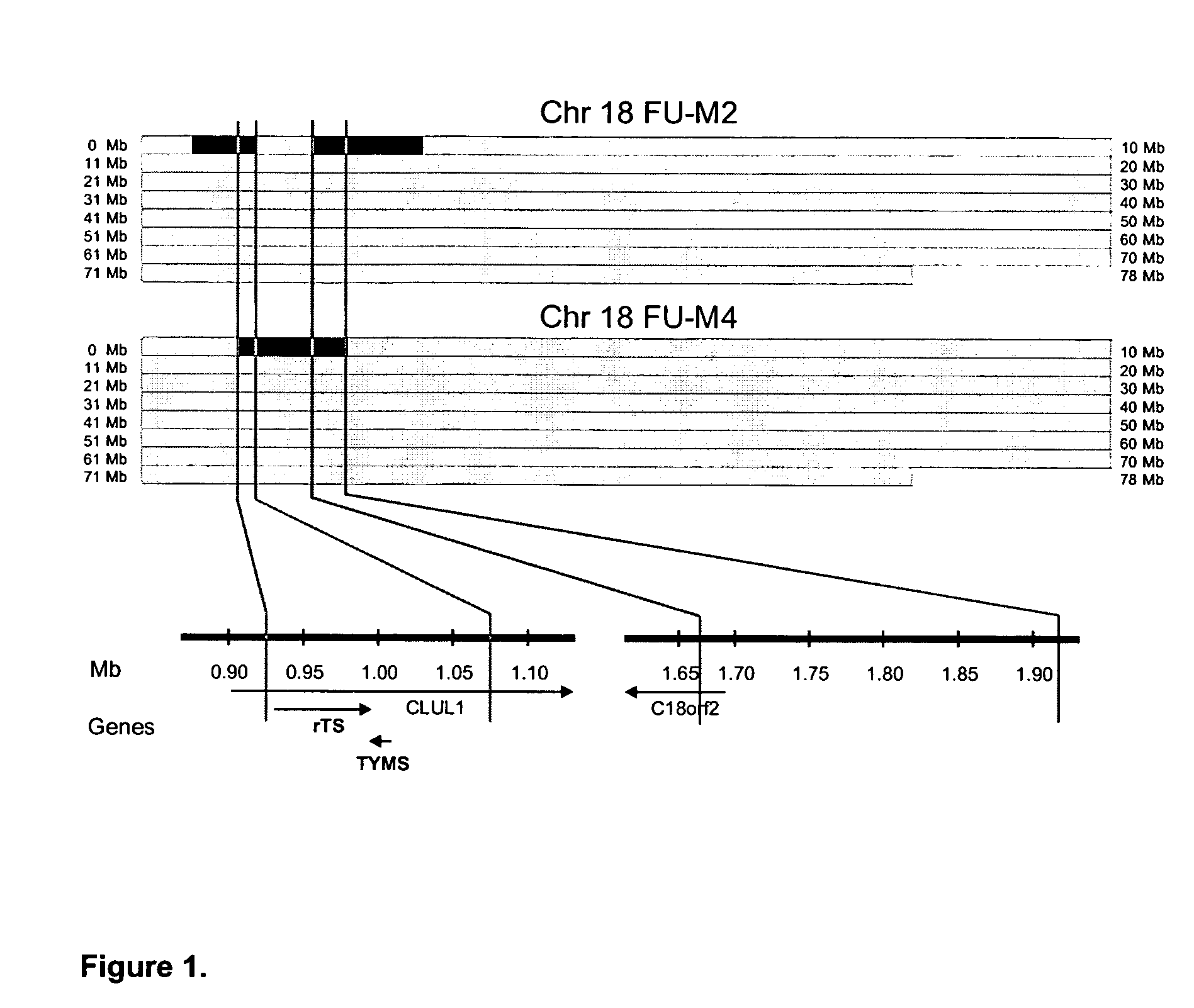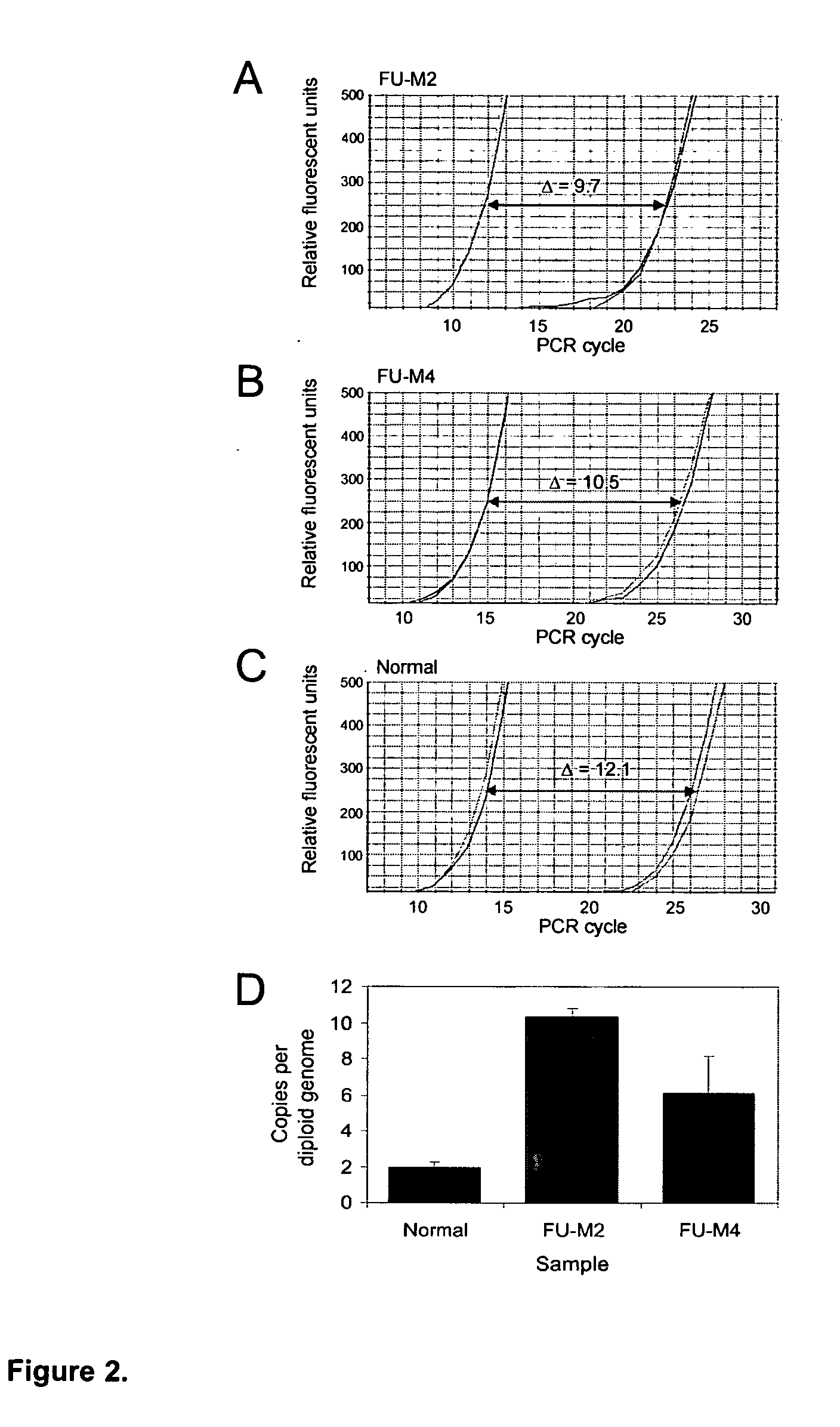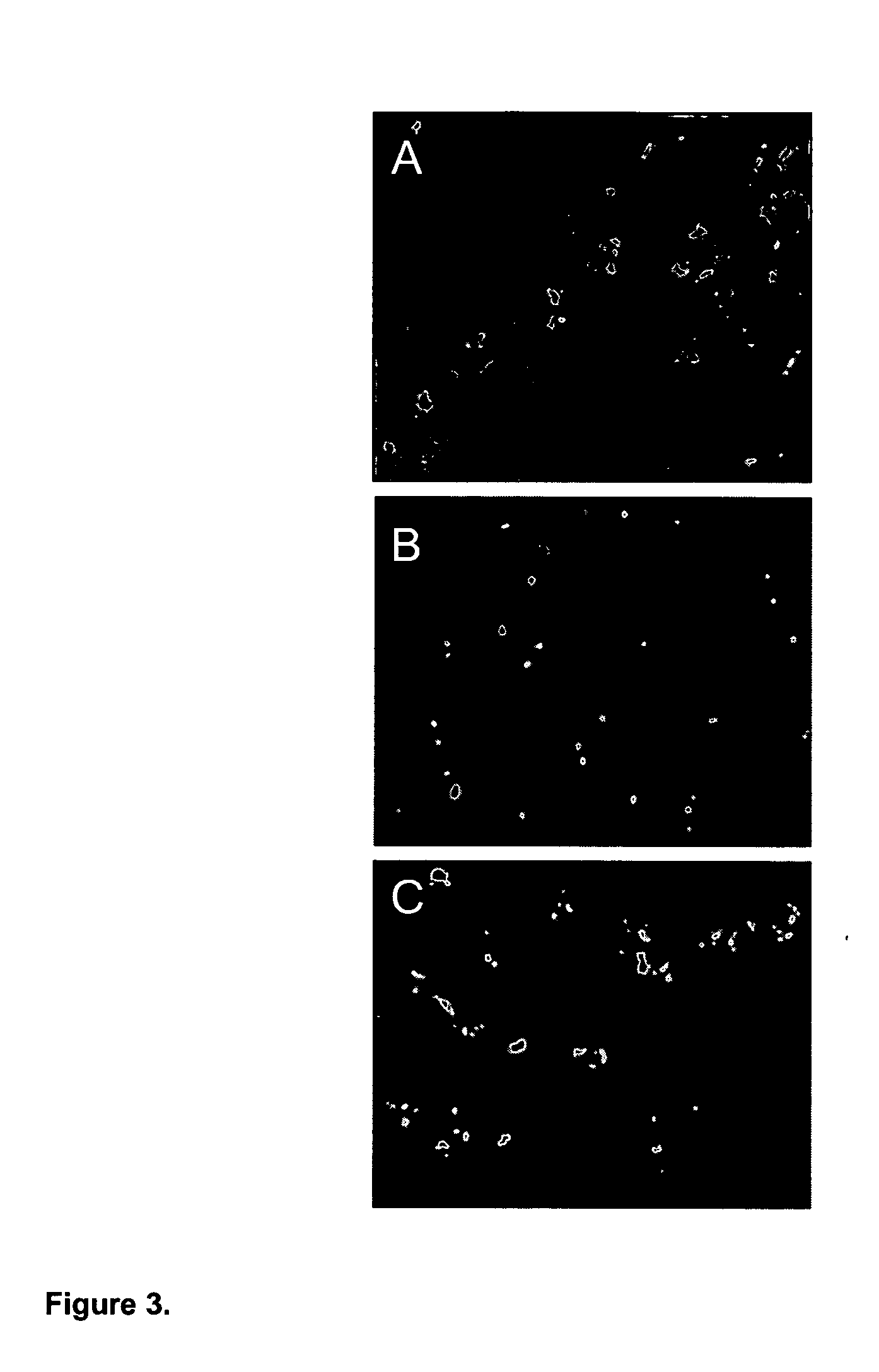Thymidylate synthase gene and metastasis
a thymidylate synthase and gene technology, applied in the field of cancer, can solve the problems of affecting normal rna processing and function, affecting tumor regression, and affecting tumor progression, so as to improve clinical condition, improve tumor regression, and reduce tumor markers
- Summary
- Abstract
- Description
- Claims
- Application Information
AI Technical Summary
Benefits of technology
Problems solved by technology
Method used
Image
Examples
example 1
Materials and Methods
Tissue Samples
[0032] Tissue samples, including normal tissues, primary tumors, and metastases were obtained from colorectal cancer patients undergoing surgery at the Johns Hopkins Hospital between 1990 and 2002. A diagnosis of colorectal cancer was established by histological examination of surgical specimens and clinical information was retrospectively retrieved from patient records. Acquisition of tissue specimens and examination of clinical records was approved by an institutional review board and was performed in accordance with HIPAA regulations. Metastatic samples were obtained from complete resections, debulking, or biopsies of metastatic lesions.
Tumor Cell Purification of Liver Metastases
[0033] Tumor cells were purified from liver metastases as previously described (25). Briefly, tissues were obtained immediately following surgical removal and digested with 1 mg / ml collagenase for 1 hour at 37° C. Single cell suspensions were obtained by sequential...
example 2
Digital Karyotyping of Colorectal Cancer Metastases
[0040] DK was used to evaluate genomic DNA from liver metastases of four different colorectal cancer patients that had previously received 5-FU based adjuvant chemotherapy (FU-M1-4). As controls, two liver metastases from colorectal cancer patients that had not previously received 5-FU (M1-2) were also analyzed. In each case, tumor epithelial cells were immunopurified from the metastases using antibody-conjugated magnetic beads (25). This purification was useful to obtain DNA templates that were free of significant contamination from non-neoplastic cells within the metastatic lesions.
[0041] A total of ˜200,000 genomic tags were obtained from each sample, permitting analysis of loci spaced at an average distance of ˜30 kb throughout the genome. Computation of genomic tag densities identified distinct sub-chromosomal regions of amplification and deletion on several chromosomes. All of the alterations occurred in individual tumors wi...
example 3
FISH Analysis of TYMS Amplification
[0043] To further evaluate the role of TYMS in 5-FU resistance, we analyzed TYMS gene copy number using dual-color fluorescence in situ hybridization (FISH). A total of 89 colorectal cancers embedded in tissue microarrays were assessed. These comprised 53 metastases derived from liver, lung and brain tissues, including the four metastases originally analyzed by DK, and 36 primary colorectal cancers. Thirty one of the analyzed lesions were from patients that had received 5-FU therapy prior to tumor resection. Biotinylated DNA from a bacterial artificial chromosome (BAC) containing the TYMS gene was used as probe and sections were co-hybridized with digoxigenin-labeled DNA from a BAC containing sequences from 18p11.21, 12 Mb closer to the centromere. Two probes from the same chromosome are necessary to distinguish chromosome duplications from true amplification events, the latter involving relatively small amplicons (30). Using FISH, multiple copies...
PUM
| Property | Measurement | Unit |
|---|---|---|
| Fraction | aaaaa | aaaaa |
| Time | aaaaa | aaaaa |
| Time | aaaaa | aaaaa |
Abstract
Description
Claims
Application Information
 Login to View More
Login to View More - R&D
- Intellectual Property
- Life Sciences
- Materials
- Tech Scout
- Unparalleled Data Quality
- Higher Quality Content
- 60% Fewer Hallucinations
Browse by: Latest US Patents, China's latest patents, Technical Efficacy Thesaurus, Application Domain, Technology Topic, Popular Technical Reports.
© 2025 PatSnap. All rights reserved.Legal|Privacy policy|Modern Slavery Act Transparency Statement|Sitemap|About US| Contact US: help@patsnap.com



